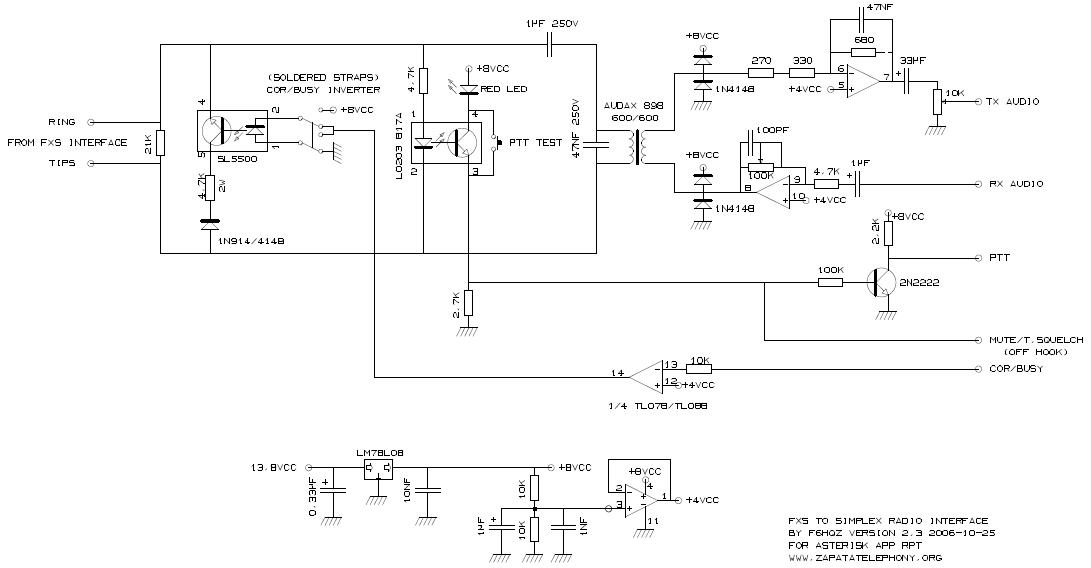
This is a converted document, originally from: http://www.hamwlan.net/interface_RPT.htm
How to remain connected ?
Several different interfaces make it possible to connect a Asterisk waiter to a transmitter-receiver. You will find some on the site of our friends WB6NIL Jim Dixon
http://www.zapatatelephony.org/app_rpt.html
and WA6ZFT Steve Rodgers http://app-rpt.qrvc.com/. They are more complex than mine and allow operation in full-duplex, for use behind a relay, for example.
For a station VHF or UHF in simplex, it seemed to to me judicious to manufacture much the simpler.
Here thus the diagram of my interface, to insert between a telephone line FXS coming from a chart Digium (www.digium.com) TDM400P or TDM2400P equipped with a module for line FXS usually connected to an analogical telephone terminal:

The telephone line can be relatively long between interface FXS controlled by Asterisk and the left interface in the vicinity immediate of the radio station. This makes it possible to have the Asterisk waiter with the expenses at the cellar, and the radio operator with the heat with the attic without degradation of the signals ; -)
The signal of detection of carrying (Busy/COR) is used "to take the line" using a
optocoupler. Asterisk and the app_RPT application thus recoivent the information of the occupation of the frequency and can then treat the BF of the received signal. It is possible to easily reverse the control signal, which can thus be a ground connection, or a compatible tension TTL, in order to adapt to any type of radio.
The passage in emission corresponds to an inversion of the polarization of telephone line FXS. A
optocoupler detects this inversion and allows the commutation of signals BF of X-ray in TX, as well as the passage in emission of the transmitter grące to the transistor envisaged for this purpose.
There are no relay of commutation prone to ageing or, nor time of commutation.
73, of F6HQZ Franēois BERGERET [email protected]